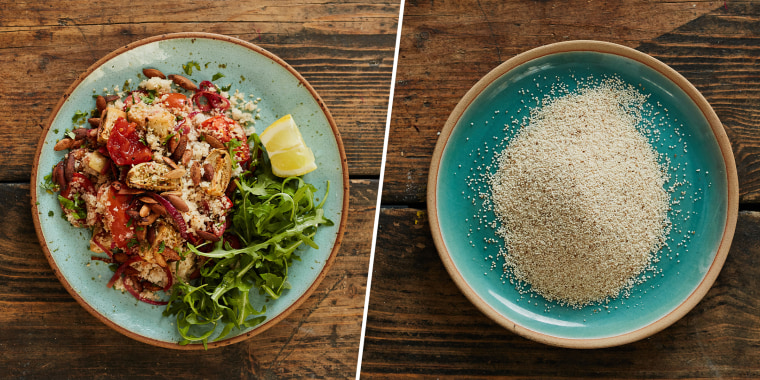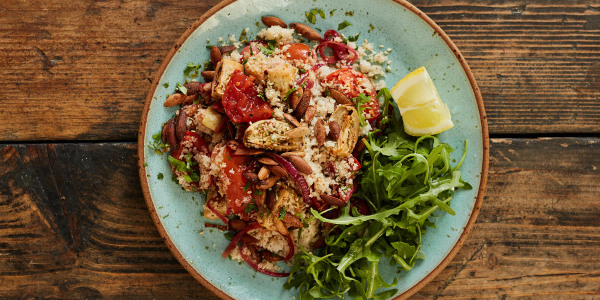Fonio has been lauded by many as a "climate crisis-ready crop," a superfood replacement for quinoa and a promising way to support smallholder farmers in West Africa, where it’s been farmed for thousands of years. Also known as iburura and acha, the ancient grain native to West Africa and often considered the continent’s oldest cultivated cereal, has long been enjoyed in the mountainous regions of Burkina Faso, Guinea, Senegal, Mali and Nigeria. In regions aggravated by climate change with nutrient-deficient soils or drought conditions where little can grow, fonio flourishes and helps preserve biodiversity, offering hope in the face of the changing climate.
With the earthy and nutty taste of couscous and the creamy yet crunchy consistency of quinoa, fonio can be used just like other grains, sprinkled into salads, added to stews or soups, made into porridge or, when ground into flour, turned into baked goods. Naturally gluten-free, fonio is a great option for those with Celiac disease or a gluten intolerance.
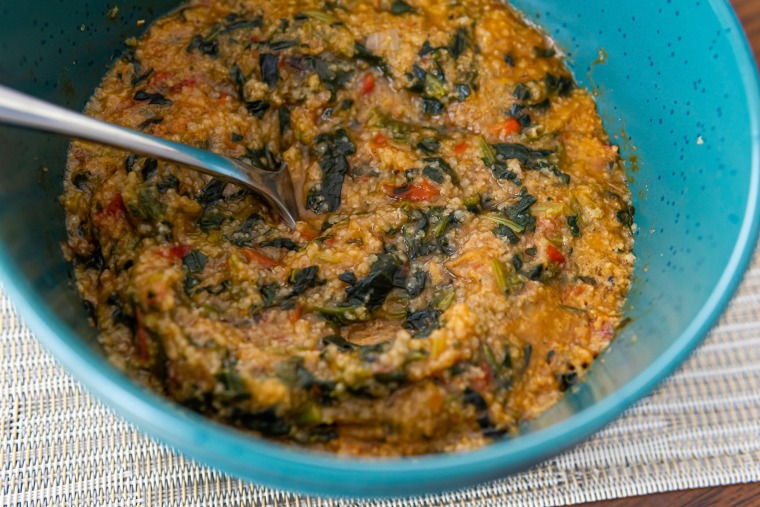
Despite being rich in nutrients and cultural heritage, fonio has been often undervalued, something that folks like chef Pierre Thiam, born and raised in Dakar, Senegal, and creator of Yolélé Foods, have endeavored to change. And they've succeeded, as fonio's new status as a priority crop in West Africa has helped it find its way to grocery shelves around the world. Hoping to cast a spotlight on the reliable, drought-resistant grain, many others, including Adda Blooms, have aimed to usher fonio into global markets, focusing on health trends (see: fonio pilaf, fonio flour and more) and areas with high rates of food insecurity.
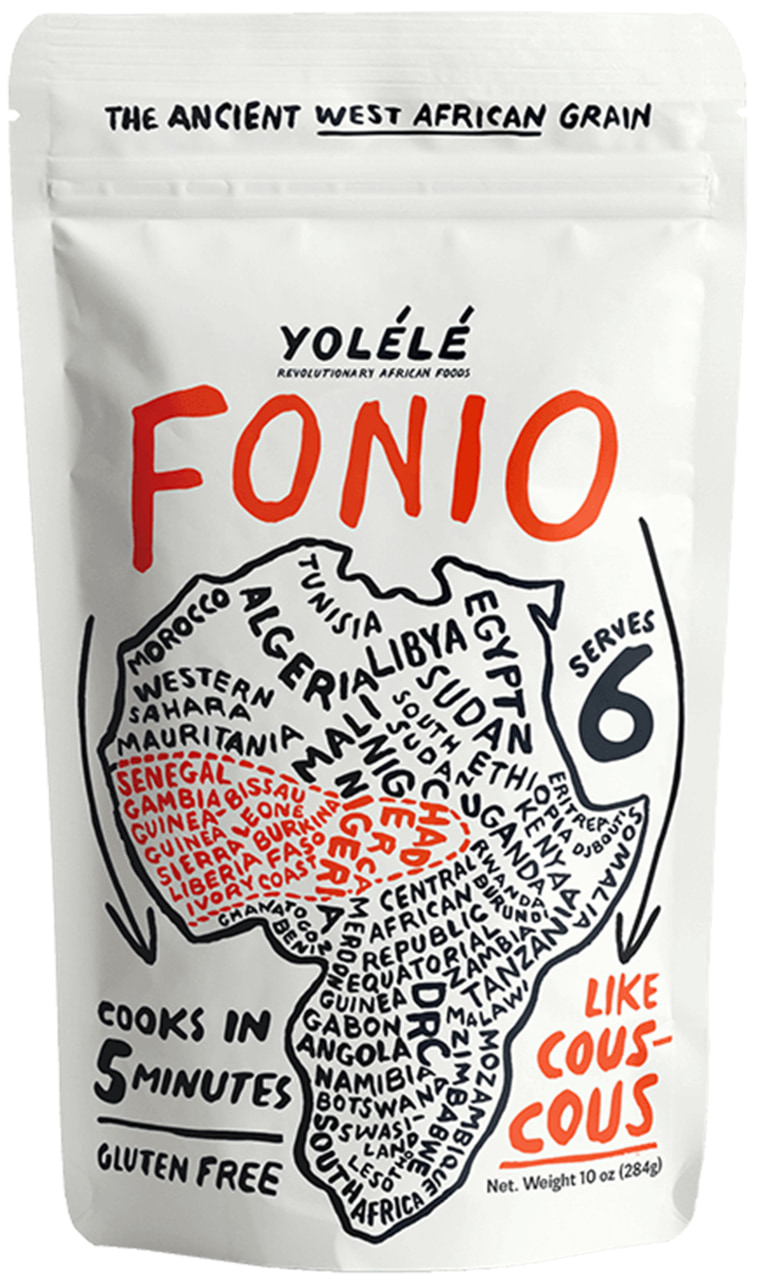
What is fonio?
A member of the millet family, fonio fits into two main categories: Digitaria ibura (known as black fonio, which grows in Nigeria, Togo and Benin) and Digitaria exilis (known as white fonio, which grows in Senegal, Chad and central Nigeria). While delicious, fonio has proven difficult to process, which is part of the reason it has thus far been kept from often-exploitative models of mass production. It is harvested by hand with a sickle to be threshed and separated from its stalk, after which many employ a mortar and pestle to sand or winnow the edible husk, then a multi-step washing and distilling process with water.
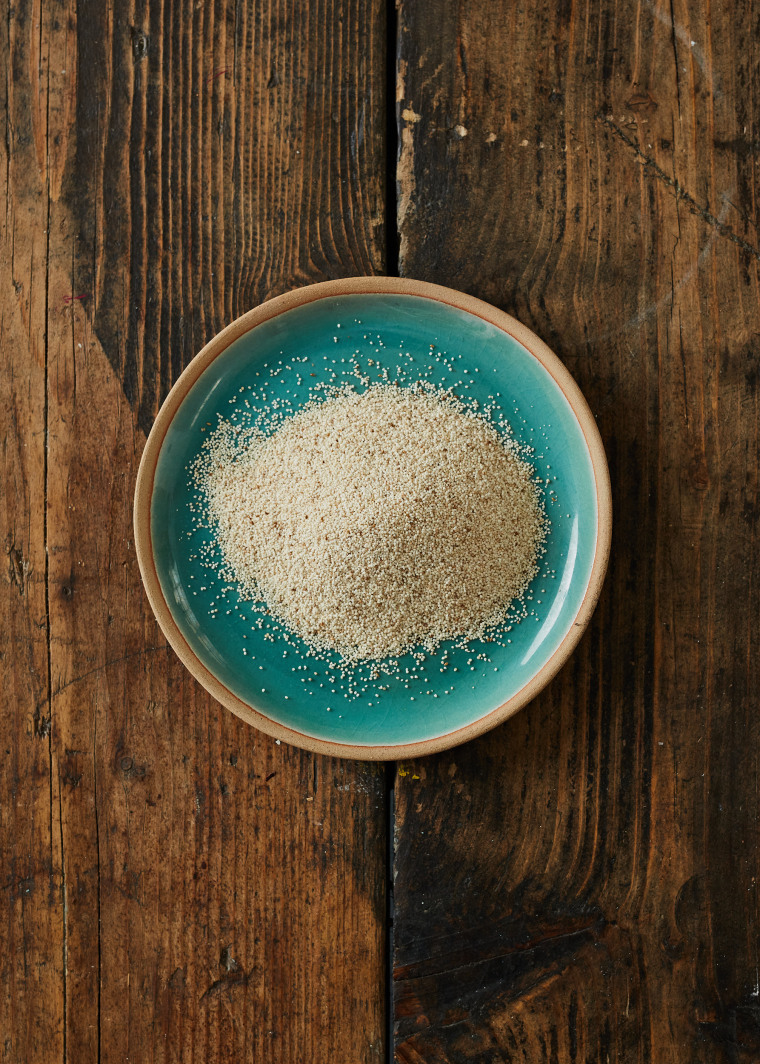
The reliable crop grows exceedingly well in poor, sandy soils and places beleaguered by land degradation (and only worsened by the climate crisis). The plant’s extensive root system pulls water from deep underground, protecting the crop from topsoil erosion and unexpected weather. It grows well in stretches of land from Sudan to Senegal, bordered by the Sahara Desert to the north and lush forests to the south, known as the Sahel region, whose hot, dry climate and sandy soils fail to support most other crops.
As a result, fonio supplies an important source of income for many smallholder farmers, who currently grow some 700,000 tons of it. Because of its high nutrient content and quick maturity (only 6 to 8 weeks), it's sometimes referred to as “hungry rice,” utilized by farm families as a quick fix in the “hungry season” before the harvest of other staple grains, or distributed to battle malnutrition and food insecurity. As climate change continues to ravage regions like the Sahel, fonio will likely only continue to become more crucial its local, natural ecosystems.
How is fonio used traditionally?
Africa’s oldest cultivated grain, grown for more than 5,000 years, fonio has worn many hats. It’s been deemed the “seed of the universe,” bestowed as a sign of honor for guests, called “food for royalty” and affixed as a good luck charm to bags on the first day of school. Even entombed in the pyramids of Ancient Egypt, fonio proved worthy of the voyage to the afterlife. In addition to being reserved for chiefs and royalty, it has served in celebrations like weddings and baptisms and holidays such as Ramadan across Senegal, Burkina Faso, Mali and Togo.

What are the health benefits of fonio?
A naturally gluten-free grain packed with important micronutrients and amino acids (which foods like rice, corn and wheat lack), fonio is one of the world’s most nutritious grains. The complex-carbohydrate (meaning digested slowly throughout the day) contains resistant starch, which alongside a low glycemic index, offers health benefits like lowering blood sugar and increasing insulin sensitivity. Because of its high calcium content, it's helpful for those who are vegan or lactose intolerant. Fonio falls into the whole-grain category, which means it may have loads of nutritional advantages, like improving gut health, aiding in weight management and potentially reducing risk of type 2 diabetes, heart disease and and some cancers.
Fonio is also a good source of iron and copper (which help form red blood, cells and connective tissue), zinc (which plays a role in immune function and protein synthesis), phosphorus, magnesium (which aids in energy production), and B vitamins (which can help with cell growth, development and function). It's particularly high in two amino acids (methionine and cysteine) which can facilitate hair, skin and nail growth. (Its amino acid profile is so good, it’s said to be similar to that of an egg, known as "the perfect protein"!)
What are some ways to use fonio?
An extremely versatile food, fonio serves as the base or a savory addition to various dishes. Its light and fluffy consistency and nutty, earthy taste make it ideal for soaking up sauces and spices. It can be steamed, sautéed, served atop salads or soups, made into porridge, cooked like couscous or milled into flour for baked goods like cookies, cakes or breads. It can also stand in for rice, millet, sorghum, bulgur, quinoa or barley to accompany meats, seafoods and vegetables. But some dishes I recommend in particular include Fonio Balls in African Peanut Sauce, Fonio Pilaf and my own Garden Egg and Fonio Salad recipe.
As many borders have closed due to the pandemic, shutting down key avenues for import and export, fonio’s role in providing emergency food assistance has grown more critical (especially people like the 17 million in the Sahel region reporting such needs last summer). Folks like Thiam are emphasizing the importance of foods like fonio while advocating for profits to remain in the hands of the communities who have farmed them for generations. To mitigate the risk of “superfood” trends that often benefit corporations in the global industrial food system to the detriment of these communities (see: quinoa), we must be cognizant of where we source and purchase them — preferably from Black-owned businesses and Black farmers.
